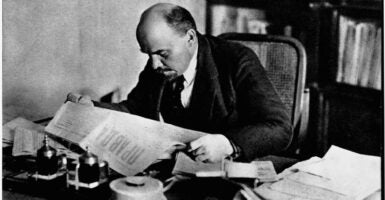Mailvox: an objection to the trilemma
DSC objects to the philosopical concept of Münchhausen Trilemma. Posted without comment.
I object to the notion that what is called "fundamentalism" is no better an epistemological foundation than the other two parts of the trilemma.
Why do chemistry, physics and biology involve so much lab-based education? Seeing something first hand offers the hope that a person can better delineate between the realm of conjecture and "real" reality, the stuff that doesn't give a fig what you think. I find that the older I get, the more of an empiricist I become. While I have broad personal experience in but a minute part of the whole world, I base my pyramids of trust on people whose primary premises match up to my own personal experience. Those who have very little first hand experience in anything must have very little data on which to base their pyramids of trust.
I aver that there are four kinds of questions: Those answerable by logic, those where experiment yields what is essentially certainty, those that yield answers that can never be better than "today's best guess," and those that cannot be answered by empiricism at all.
- As you know, some things are true by axiom, ex. a consumable cannot be consumed and still remain available for consumption. These axioms are the foundation for what Hans Hermann Hoppe describes in his essay The Democratic Leviathan.
- Hard science rests on experiments where the outcome is the same no matter how many times one considers repeating it. While dropping a stone a thousand times to see it fall may induce someone to posit that on the 1001th try it will rise when released, such a belief is clearly irrational.
- Much of today's "science," as you've well described, falls into the third category. It is the realm of statistical study, where confidence intervals, poisson distributions and Student T tests live. The 95% confidence interval of course posits that the hypothesis is 19/20ths likely to be true, but this is not remotely the same standard as category 2 above. Vast amounts of "social science" attempt to mimic this style of study, but there's no substance to it at all. "Real" science, in my view, is that where variables can actually be controlled, a condition that is laughably absent in a vast amount of what today is billed as science.
- What happens to us when we die? Do we have consciousness beyond our physical envelope? Is there life on distant planets? What color is a virion, and if we could see it like we see a golf ball, what would it look like? These and myriad other questions cannot be answered via empiricism. Providing systematic answers to empirically unanswerable questions is the province of religion. Today's Equalist Cult religion is particularly odd, in that most of its dogma and sacraments are actually at odds with empirically-derived reality. It is thus a pure exercise of the "power" Orwell illustrated when O'Brian forces Smith to "see" a different number of fingers than O'Brian extends. The first step toward wisdom comes by calling things by their right names.
The author notes that "Human beings are rational animals." This is daffy on its face. Most humans may be capable of reasoning, but it's self-evident that few spend any time at all in this part of their mind. As Kahneman shows, experiment after experiment documents that most of the time we let the nearly autonomic part of our brain do all the thinking. Only rarely do we invoke our deliberative, analytical mind. Most people are largely creatures of emotion, and their decisions are based on what action or belief would yield the greatest emotional comfort...and it's usually to think and do what the herd surrounding them thinks and does. I was dismayed to confront that intelligence does not coassort with rationality. Very smart people are especially good at rationalizing their folly.
These are the premises on which I base my objection to axiom and empiricism being lumped in with circular reasoning and "turtles all the way down." Reality exists. The notion that people see different things when observing the same thing is baloney. If I drop a golf ball and simultaneously launch one horizontally, they will always hit the floor at the same time, no matter who insists with great fervor that the dropped one lands first. If, upon observing them bounce simultaneously, an observer still insists that they hit at different times, it's not a case of competing epistemologies. Some systems of thought rest on axiom. From axiom comes reliance on empiricism, trusting ones eyes when what's seen conflicts with others' ideological constructs. This is not a three part problem. Two of the trilemma's legs are folly, the third is the only means of attempting to align with reality in order to decide and act. Among today's great follies is insistence on baseless conjecture as fact. Our society is structured under Taylorist notions, that there's one best way to live, and the dogma that populates this conflicts openly with observed reality.
A modern example: Say's Law is "In order to consume, you must first produce." This is a logical axiom, given that if people consume without producing, eventually there's nothing produced and thus nothing to consume. If that's "fundamentalism" and somehow not axiomatically true, show me (Mr. Macris.) Monetary Madness since the 1960's posits that the ability to enter the market (to consume) can be created out of thin air via the act of borrowing. The IOU (generally a T-bond/T-bill) becomes wealth, and the borrowed loot goes straight into someone's hands to be used (mostly) to consume. No production precedes this consumption, so the net effect is less product available (but a vastly rising perception of wealth, both in holding the debt and in the rising prices of assets goosed by a tsunami of credit money.)
Since the bond market low in 1981, the US gov't didn't need to tax in order to spend. This is why spending could skyrocket as tax cuts were passed. Domestic production could be shipped to China, who then sent us endless pre-landfilled junk in exchange for Treasury Debt. Since China doesn't trade in dollars, that loot came back here...and we now see that Americans pawned their land, their businesses and THEIR POLITICAL SYSTEM in return for some trinkets. China bought our legislatures, our executive branch agencies and our judiciary. Pretty smart on their part. With the helicopter drop of $1,200/person thing this summer, we now see that credit creation has entered a new phase, where the government still does not need to tax, and people no longer need to work in order to consume. Everyone's a welfare recipient now., not just people on SSDI, AFDC, Section 8, Medicare, Medicaid, etc. Prior to this summer, only Big Business oligarchs and financiers received such loot.
Where'd Say's Law go?




